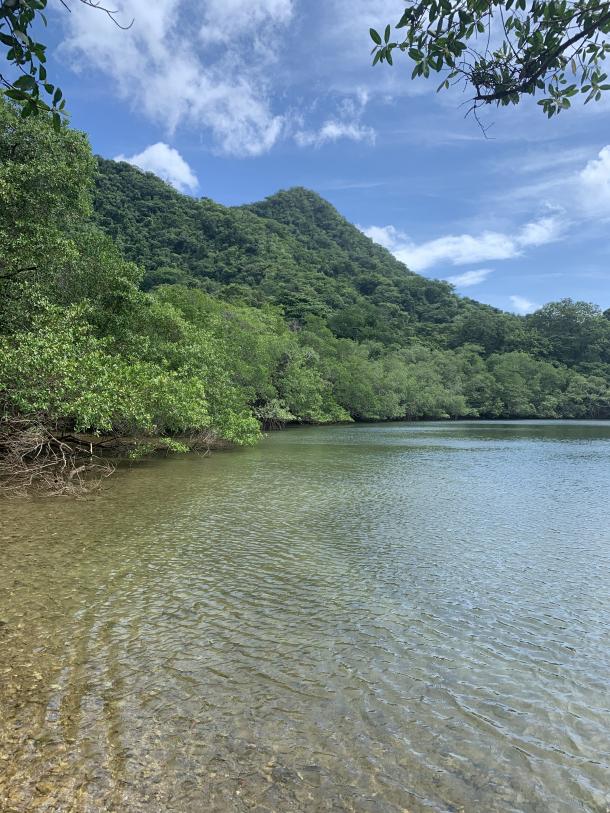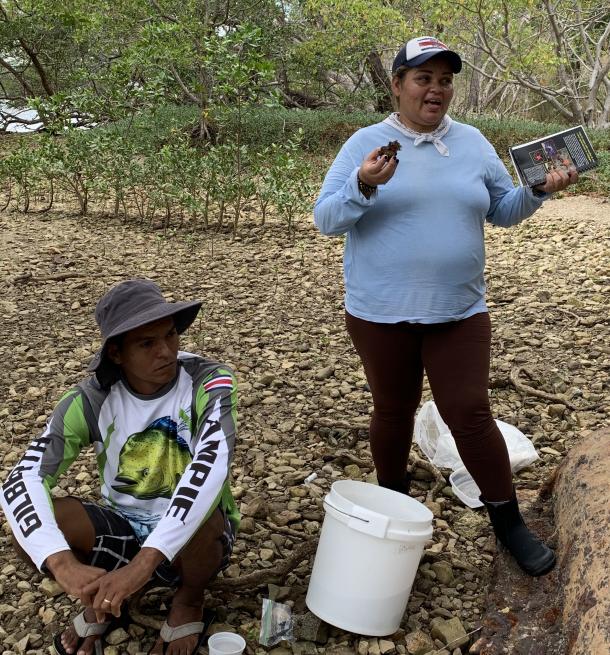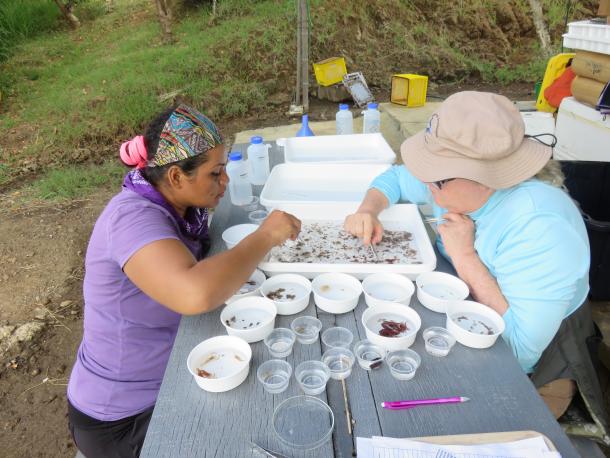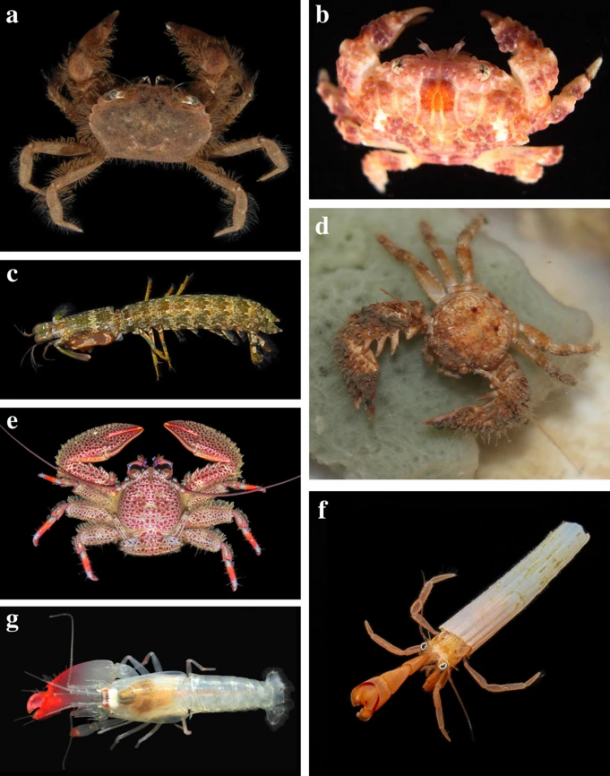The marine bioinventory program, known as BioMar, adds to the decades-old ACG bioinventory and parataxonomy program. Begun in 2015 as a collaborative effort of GDFCF, ACG, and the Centro de Investigación en Ciencias del Mar y Limnología (CIMAR) at the University of Costa Rica in San José, the goal of BioMar is to bioinventory and understand this species-rich area of ACG’s Sector Marino and this region of the eastern tropical Pacific Ocean.

The pristine waters and mangrove forests of Bahía Santa Elena.
The no-take zone of Sector Marino is 43,000 hectares in size, but the greater marine area of ACG includes 150 kilometers of complex wild coastline defined by secluded mangrove bays, coral reefs, and the special management zone of the spectacular Bahía Santa Elena. This seascape is one of the richest biological areas of the eastern Pacific Ocean because of the Costa Rican Dome, a nutrient-rich upwelling current that provides cool water and food to both local species and the many migrants (whales, dolphins, birds, turtles, sharks) that frequent this area.
Understanding the biodiversity of this seascape will help ACG and its communities more effectively conserve and manage it. Similar to the role of parataxonomy in terrestrial research, the BioMar project benefits from the work of two marine parataxonomists, who are residents of the adjacent small fishing village of Cuajiniquil. They are dedicated to collecting, processing, and preparing marine specimens for DNA barcoding and they accompany CIMAR researchers on all of their field trips. They also play a key role in their community serving as an example of careers in non-extractive biodiversity management.

Marine parataxonomists Gilberth Ampie (seated) and Yelba Vega explain their work to ACG visitors.

Yelba Vega and MSc. Rita Vargas, a crustacean specialist at CIMAR, process samples at the Isla San José research station (photo by Eric Palola).
BioMar is led by Drs. Jeffrey Sibaja-Cordero and Jorge Cortés Núñez of CIMAR and GDFCF Board Chair Dr. Frank Joyce, and involves several CIMAR research specialists, the key support of marine parataxonomists and the ACG research program, and experienced local boat captains in Cuajiniquil. Since its inception, BioMar has dramatically increased the number of species collected and identified. Prior to this program’s existence, 594 species had been identified by various researchers in the previous 85 years; whereas BioMar has collected 1,123 species in just four years [SEE: Publications].

Some of the new crustacean records for Costa Rica, discovered by the BioMar program (photos by Gilberth Ampie) [SEE: Publications].